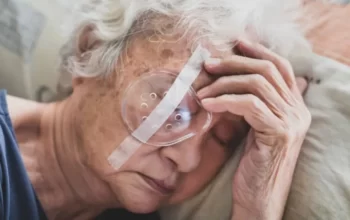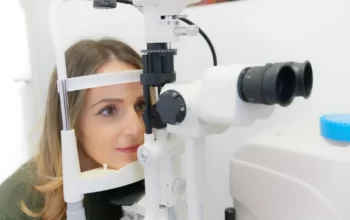
Cataracts were the cause of your blurry vision, as determined by your most recent eye exam. However, before having the procedure, you’d like to know your alternatives. Your doctor claimed that cataract surgery is the only proven treatment.
Maybe you’ve heard that marijuana can treat glaucoma. Or perhaps you’re utilizing a CBD product for its anti-inflammatory and antioxidant properties. CBD is a cousin of marijuana made from hemp. What are your alternatives?
In either case, the response is the same: Neither CBD nor marijuana has been proven to be effective at treating cataracts by science. Although CBD and marijuana can both help with glaucoma symptoms and inflammation, they haven’t been shown to be particularly helpful for cataract patients. When you comprehend what causes cataracts and glaucoma, you’ll be able to understand why.
What Are Cataracts?
About 40% of all blindness worldwide is caused by cataracts, which are also the most common cause of visual impairment.
The lens becomes clouded with a cataract, going from clear to milky white, brown, or even yellow. As a result, light cannot enter the eye. The cataract gradually reduces the amount of light that can enter the eye, leading to vision loss and eventually blindness.
Cataracts Vs. Glaucoma: How They’re Different
The lens of the eye, a transparent structure that functions somewhat like a camera lens, is where cataracts develop. Because the lens’s crystallin proteins start to degrade into tiny clumps that obstruct the lens’ natural transparency after age 40 in humans, cataracts commonly appear. Vision fog is caused by this cloudiness, and it gets worse over time, especially after age 70. The natural lens is removed during cataract surgery, and an intraocular lens (IOL) is then placed in its place.
While the optic nerve is affected by glaucoma. Blind spots result because the optic nerve is compressed by the intraocular pressure, causing long-term damage. People with glaucoma first noticed that marijuana use eased their symptoms decades ago as marijuana use increased in popularity.
THC, the main chemical in marijuana, appears to lower intraocular pressure and lessen glaucoma symptoms, but only for a short period of time. Nowadays, intraocular pressure can be managed all the time with glaucoma medications.
There is scientific evidence that marijuana affects glaucoma, but there is no evidence that it affects cataracts.
What About CBD As A Natural Treatment For Cataracts?
Cannabis and THC have no known effects on cataracts. Is CBD the same way?
Cannabidiol, also known as CBD, is a substance derived from the hemp plant that has gained popularity in recent years due to the fact that it does not cause intoxication.
Advertisers for cannabidiol claim that it can lessen stress, pain, and inflammation. The US hasn’t done any research to back up these claims. Drug Enforcement Agency. For a rare form of pediatric epilepsy, the FDA has only approved one CBD-based medication.
What about cataracts, though?
There is no proof, as of mid-2020, that CBD prevents cataracts. However, according to a 2019 article in the medical journal Frontiers in Pharmacology, there is a growing body of research into possible natural or homeopathic remedies for cataracts. Again, there is currently little scientific support for these treatments, but they do raise the prospect of developing drugs one day to treat cataracts. It is unknown if any of those medications would contain CBD.
What Benefits Does CBD Oil Have For Cataracts?
Studies show People who have cataract surgery or who have postoperative vision issues can benefit from CBD oil. After all, CBD is a known anti-anxiety medication and can help patients overcome fear and anxiety before the operation. In addition, CBD is a powerful anti-inflammatory agent and can be beneficial during the recovery phase.
Cannabinoids, like CBD oil, might be the advancement in eye care that our society has been waiting for as it ages quickly. Cannabinoids may help treat glaucoma by lowering eye pressure, according to research teams around the world. The communication between the brain and the eyes is also improved, in addition to a host of other health issues relating to the eyes, like vision loss. So now you know how CBD Oil can treat eye conditions like cataracts!
Is There A Connection Between CBD And The Typical Risk Factors For Cataracts?
To answer that question, let’s consider the most common risk factors that contribute to cataracts:
- Smoking
- Diabetes
- Long-term use of corticosteroid medications
- Ultraviolet light exposure
- Dietary deficiencies
- Obesity
- High blood pressure
- Excessive alcohol drinking
None of these elements fit the potential advantages of CBD very well. But what if we target the underlying reason for cataracts? Oxidation, which causes the release of free radicals that harm the eye’s lens, is one potential factor in the development of cataracts with age. Free radicals are the target of antioxidants, which also lessen the effects of oxidation in the body as a whole.
The antioxidant properties of CBD are claimed. That could theoretically help with cataracts. However, studies show that the best source of antioxidants for preventing cataracts is a healthy diet full of fruits, berries, vegetables, and seafood. Since CBD is an over-the-counter supplement that is largely unregulated, it is challenging to determine a consistent dosage.
It’s also been suggested that CBD might help with anxiety, inflammation or pain after cataract surgery. Of course, you would need to discuss that with your surgeon, who would probably recommend FDA-approved medications to treat any postoperative side effects.

Different Types And Symptoms Of Cataracts
It is similar to seeing a smudge on a window to have cataracts. You can see less and less as this soiled area grows until nothing is visible at all. There are different types of Cataracts:
- Nuclear Cataracts ( affect the center of the lens). At first, it may result in increased nearsightedness or even a brief improvement in your reading vision. But as time passes, the lens gradually becomes more yellow in density, further obstructing your vision.
- Cortical Cataracts (affect the edges of the lens). Begins as whitish, wedge-shaped opacities or streaks on the outer edge of the lens cortex. The streaks slowly advance to the center of the lens, blocking light from passing through the center as they do so.
- Posterior Sub-capsular Cataracts ( affect the back of the lens). Usually begins as a small, opaque spot that develops in the light’s direct path, close to the back of the lens. Often interferes with your reading vision, reduces your vision in bright light, and causes glare or halos around lights at night. These cataracts typically advance more quickly than other types.
- Congenital Cataracts (You were born with it. Some people either have cataracts from birth or start to get them as children. These cataracts may be genetic or associated with an intrauterine infection or trauma.
Get Professional Advice On Marijuana, CBD, And Cataracts
A sizable industry has grown up around CBD and marijuana legalization. Just keep in mind that this market is primarily driven by the desire to make money and not by medical research.
It’s best to discuss the effects of marijuana and CBD with your eye doctor and personal doctor if you’re involved in this market. Surgery will continue to be the most effective treatment for cataracts until an FDA-approved drug hits the market.
Surgery is, of course, a serious choice. It’s possible that you can’t afford it. Your eyes might not be a good candidate for the procedure. If you decide to have surgery, be sure to work with a skilled cataract surgeon, be aware of all the risks, and adhere to all post-operative healing instructions.
As long as you are aware of the most effective methods for treating them, cataracts don’t have to cloud your perception of the outside world. Don’t anticipate marijuana or CBD to be one of those methods until more trustworthy research is available.



